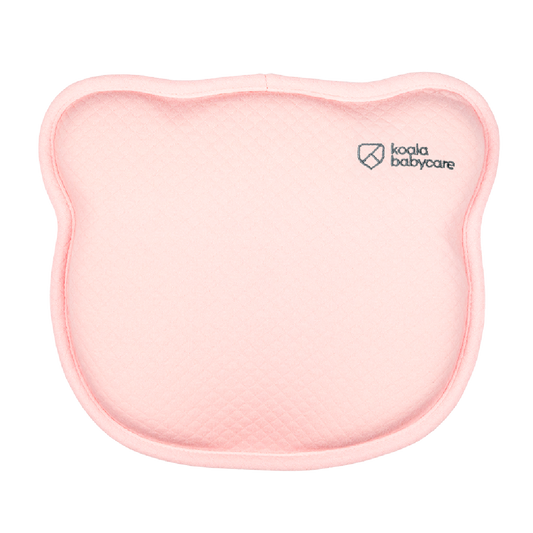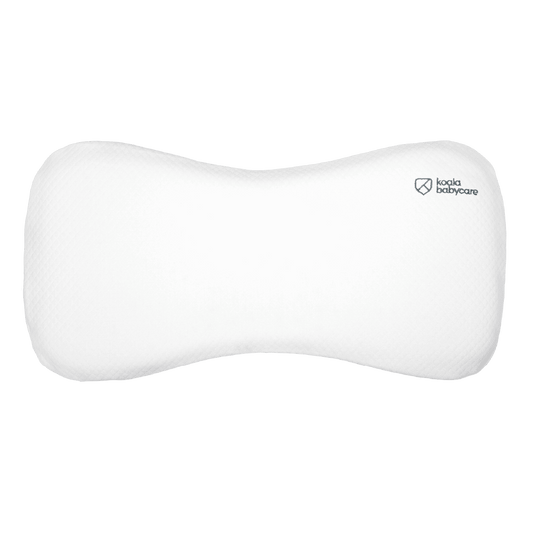Maria Antonietta Bonanno, a healthcare professional, who specialises in cranial deformation in young children, explains the causes of Plagiocephaly and positional Brachycephaly (flat head syndrome) and describes their signs and symptoms.
Dear mums and dads, it’s important for you to know that head shape abnormalities are extremely common and occur for a variety of reasons, many of which deriving from factors beyond parent’s control.
The most common disorder is Flat Head Syndrome, known in medical terms as posterior positional plagiocephaly and posterior positional brachycephaly, which can occur before, during and even after the birth.
What is positional brachycephaly?
Positional brachycephaly is characterised by flatness across the back of the baby’s head, which, when observed closely, also appears shorter than normal. The word Brachycephaly, in fact, originates from Greek and literally means short head.
What is posterior positional plagiocephaly?
Posterior positional plagiocephaly, on the other hand, refers to a flattening of the right or left back side of an infant’s head. The word Plagiocephaly derives from Greek and can be translated as oblique head.
Positional plagiocephaly is more prevalent in boys: two out of three babies suffering from the condition are boys.
Furthermore, 70% of infants tend to experience a higher degree of flattening on the right side. This is due to position the baby adopts, inside the womb, during the last few months of pregnancy.

Various levels of severity of Positional Plagiocephaly
An infant who develops Plagiocephaly, tends to lie more on one side of their head than the other. There are different levels of severity of the disorder.
During initial stages, the skull becomes progressively more deformed in an asymmetrical manner and part of the neck is also flattened (TYPE I).
If no action is taken to curb the leading cause of the deformity, more serious abnormalities may gradually occur.
As it develops further, and flattening becomes more prominent, it may cause the ear (on the flattened side) to move forward, thus resulting in misalignment. This is especially noticeable when looking at the baby's head from above. (TYPE II).

As the skull bones continue to displace, the forehead on the flattened side becomes more pronounced, and may develop a small bulge-like appearance. (Type III).
If left untreated, the severity continues to increase and begins to affect the position of the eyes, cheekbones, jaw, and nasal septum, causing asymmetricity in the baby’s face (Type IV).
Eventually, the skull starts to grow upwards (type V).
Causes of head shape disorders in infants
A baby’s head, as it forms and develops, both inside the womb as well as during the very first few months of life, is extremely soft and malleable. This is because the skull plates have not fused tightly together yet and can lead to several factors causing flat head syndrome.
Causes inside the womb
Flat head syndrome prior to birth is mainly due to a restriction or reduction in movement of the foetus inside the womb. The main reasons behind this are:
- A very large baby (male foetuses tend to be particularly bigger than female foetuses).
- The baby adopts an upside down position, ready for birth, too early on.
- Twin pregnancy.
- The shape of the uterus may force the baby to adopt a position where they are resting on their head.
- Reduction in amniotic fluid.
- Increased amount of amniotic fluid.
- Lack of elasticity of the uterus, thus, preventing it from expanding during pregnancy.
- Low birth weight.
- Baby doesn’t move a lot.
Any one of the above, can easily result in a misshapen head or a preference for lying on one particular side of their head right from birth.
Causes related to childbirth
Infant cranial deformities can also be linked to the birth itself; in order to pass through the birth canal, the baby’s head has to change its shape and become smaller.
This is precisely the reason why a baby's bones are not fused together tightly before birth, enabling them to move, flatten, and even overlap.
After 72 hours, however, a baby’s head should return back to a rounder shape. If this does not happen, then there may be an element of cranial deformity.
The shape of a baby’s head may also be affected by skull fractures during birth or the presence of large haematomas, caused by having to use an obstetrical suction cup for example.
Lying in the same position for too many hours at a time
The fact that babies spend a considerable amount of time sleeping or resting on their backs for safety reasons, is also considered to be one of the causes of cranial deformities.
Since 1992, paediatricians have been recommending that babies sleep on their backs, i.e., facing upwards. This guideline has successfully reduced cot death syndrome (SIDS) by 40 % and, therefore, it is essential to continue to follow this recommendation.
We are well aware, however, that a young baby not only spends a large proportion of their day sleeping, but also that a lot of their “awake” time is also spent lying on their backs: during nappy change, when being held by mum or dad, when out for a walk in a carrycot or pram, when in their car seat, all of which don’t allow for the baby to move about much or change position.
This is why flat head always tends to occur around the back, due to the constant pressure in that area.
Hospitalisation can also be a contributing factor. When a baby is born very prematurely, a long stay in hospital means the baby lies constantly in the same position, as they are wired up to tubes and other various medical equipment. This may also lead to a misshapen head.
Positional Torticollis
80% of children with plagiocephaly also present a difference in strength and elasticity between the left and right side neck muscles. This results in the baby preferring to always, or often, keep their head turned towards one specific side.
This preference almost always stems from pregnancy, and relates to the position in which the baby lay inside the womb. Post birth, they continue to feel more comfortable in that same position.
However, an infant may also develop a preference for turning their head towards one side once outside the womb, consequently, forming a difference in strength and elasticity between neck muscles on both sides. This may occur if the majority of their stimuli occur from the same side: for example, their mum sleeps on that side, their musical cot mobile is positioned on that side.
Infants may also begin to develop a preference for moving and using their hand towards the side of their body where they turn to most, thus, not using their other hand as much as they should, and only rolling towards that side. As a result, their preference for one side increases and, subsequently, heightens the risk of the infant using the rest of their body asymmetrically too.
When do brachycephaly and positional plagiocephaly develop?
If an infant spends too much time lying on their back, their neck muscles may develop the same level of strength, which, in turn, keeps their head straight. This can cause the back of their head to flatten, thus, resulting in brachycephaly.
If, on the other hand, an infant tends to turn to one side, or if they are always held on the same side, one side of their head will flatten more prominently, resulting in posterior positional plagiocephaly. The longer a baby spends in the same position, the greater the severity of the deformity.

Needless to say, the reason why an infant develops positional brachycephaly or posterior positional plagiocephaly may be due to a combination of factors originating from inside the womb, the birth itself, and post-birth issues.
How to prevent and treat your infant’s head deformities? Read Maria Bonanno's advice in our article 10 Helpful Tips on preventing and treating Brachycephaly and Positional Plagiocephaly during the first months of a baby’s life.
Maria Antonietta Bonanno - Physiotherapist
Maria Antonietta Bonanno is a physiotherapist, graduated in Rehabilitation Sciences (with specialisms in Neurology, Osteopathy and Posturology), and a lecturer of Paediatric Cranio-Sacral Therapy. She has worked in Cranial Manipulation since 1999 and is actively involved in various research projects on the topic of Positional Plagiocephaly in collaboration with several universities.








